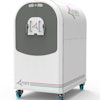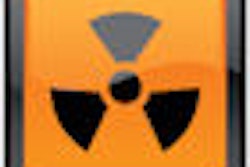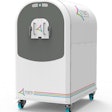Tuesday, December 1 | 3:30 p.m.-3:40 p.m. | SSJ05-04 | Room S504AB
A simple visual counting assessment of calcium scores in low-dose ungated chest CT provides clinically relevant information that corresponds to patient mortality data, according to a new study from Israel.Calcium scoring heavyweight Dr. Joseph Shemesh from Sheba Medical Center in Tel Aviv and colleagues actually counted areas affected by calcium in a cohort of 8,955 smokers ages 40 to 85 who had ungated low-dose chest CT scans.
Arteries were scored 0 if no calcium was seen, 1 if less than one-third of the length of the entire artery showed CAC, 2 if one-third to two-thirds showed CAC, and 3 if more than two-thirds showed CAC. Thus, each subject received a CAC score from 0 to 12.
CAC score 4 or greater was a significant predictor of death from cardiovascular disease as the point estimate of the odds-ratio was 3.6 (95% confidence interval: 2.6-4.9, p < 0.0001), the authors found. Deaths from cardiovascular disease increased with an increasing CAC score.
Shemesh concluded that CT scans of the chest should include a quantitative assessment of the extent of calcifications as it provides clinically relevant information.
"The results of this work emphasize again the prognostic value of CAC score in the prediction of cardiovascular mortality in a large population of smokers and ex-smokers," Shemesh wrote in an e-mail to AuntMinnie.com. The results "deliver the message to the chest radiologists that information on the CAC score is relevant and should be a part of the chest CT report. Also, we believe that this study will contribute to the efforts to combine lung and coronary screening, which are currently done separately."




















